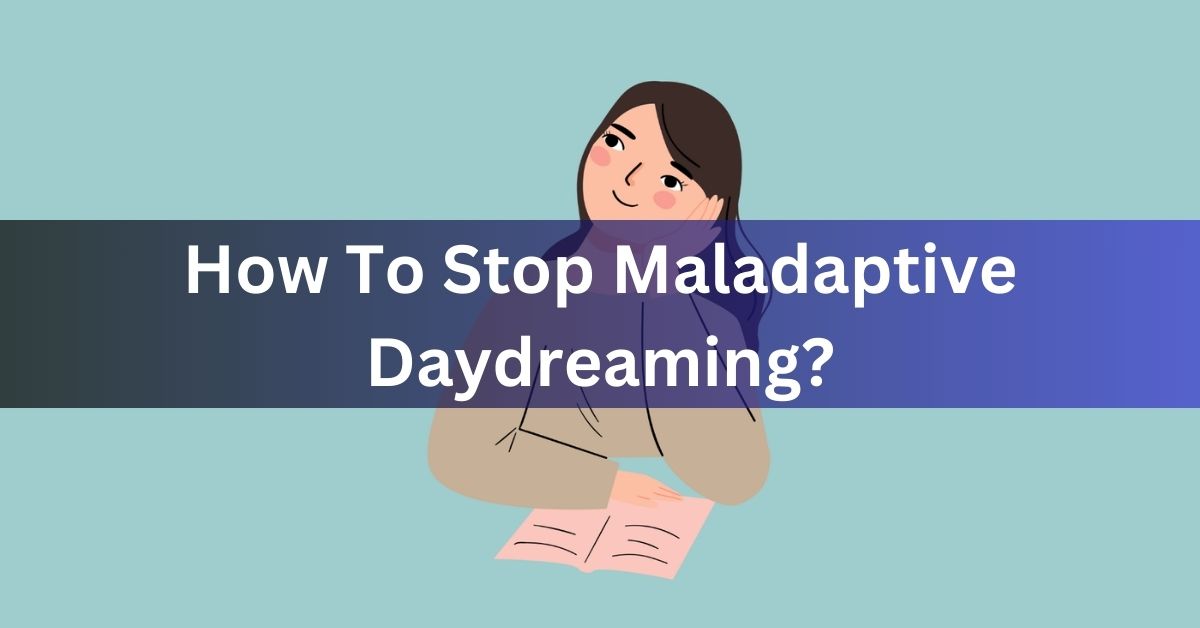How To Stop Maladaptive Daydreaming? – Access The Details Instantly!
By embracing mindfulness techniques and consciously redirecting focus to real-life activities, a personal journey unfolded, breaking the chains of maladaptive daydreaming and restoring a sense of control and engagement with the present.
Maladaptive daydreaming, coined by Dr. Eli Somer, involves excessive immersion in intricate daydreams, disrupting daily life. Holistic strategies, including mindfulness and professional support, empower individuals to overcome it effectively, fostering a more fulfilling existence.
Discover the keys to overcoming maladaptive daydreaming, as we delve into practical strategies and mindfulness techniques, guiding you towards a more focused and fulfilling reality. Explore with us the transformative journey of reclaiming control over your imagination.
Understanding Maladaptive Daydreaming – Click Here For The Full Report!
Maladaptive daydreaming is a term coined by Dr. Eli Somer, a clinical psychologist, to describe a unique form of excessive daydreaming that goes beyond the typical range of daydreaming experiences.

Individuals with maladaptive daydreaming find themselves engrossed in elaborate and often fantastical scenarios, often to the detriment of their real-life responsibilities and relationships.
1. Intensity of Daydreams:
Unlike typical daydreaming, where fleeting thoughts come and go, individuals with maladaptive daydreaming experience exceptionally vivid and immersive fantasies. These daydreams can be so intense that they temporarily overshadow the individual’s awareness of the real world.\
2. Duration and Time Consumption:
A hallmark of maladaptive daydreaming is the significant amount of time individuals spend engaged in their fantasy worlds.
Dr. Somer’s research suggests that some individuals may devote several hours each day to daydreaming, leading to neglect of essential tasks, work responsibilities, and personal relationships.
3. Emotional Engagement:
Emotions play a crucial role in maladaptive daydreaming. Individuals often experience a deep emotional connection to the characters and events within their daydreams.
This emotional engagement can contribute to the persistence of the behavior, as the daydreams may serve as a coping mechanism for dealing with stress, anxiety, or unmet emotional needs.
4. Escapism and Coping Mechanism:
Maladaptive daydreaming is frequently linked to the desire for escapism. Individuals may use their fantasies as a coping mechanism to escape from real life’s challenges, disappointments, or monotony.
The fantastical scenarios created in their minds provide a temporary retreat from the complexities of the external world.
5. Impact on Real-Life Functioning:
One of the defining features of maladaptive daydreaming is its negative impact on real-life responsibilities and relationships.
Due to the overwhelming pull of their daydreams, individuals may struggle to fulfill work or academic obligations, maintain social connections, or even meet basic self-care needs.
Read Also: Louise Bonsall – Click To Unravel The Mystery!
6. Triggers and Patterns:
Dr. Somer’s research emphasizes identifying triggers and patterns associated with maladaptive daydreaming. Understanding what prompts the onset of intense daydreaming episodes can be instrumental in developing targeted strategies for intervention and control.
7. Comorbidity with Mental Health Conditions:
Maladaptive daydreaming is often observed in conjunction with other mental health conditions, such as attention-deficit/hyperactivity disorder (ADHD), obsessive-compulsive disorder (OCD), or depression.
Recognizing and addressing these coexisting conditions is essential for a comprehensive approach to treatment.
Signs and Symptoms – Dive into the information now!
Identifying maladaptive daydreaming is crucial for those seeking to address and overcome this behavior. Common signs and symptoms include:

- Excessive time spent daydreaming: Individuals with maladaptive daydreaming may spend hours daily lost in their fantasies, neglecting essential tasks and responsibilities.
- Interference with Daily Life: The daydreams interfere with daily functioning, affecting work, school, relationships, and other essential aspects of life.
- Limited Control: Individuals may struggle to control the urge to daydream, even when they recognize the negative consequences.
- Emotional Impact: Maladaptive daydreaming can lead to intense positive and negative emotions related to the fantasies. This emotional involvement can contribute to the persistence of the behavior.
- Isolation: Some individuals may withdraw from social interactions to indulge in their daydreams, leading to isolation and loneliness.
Strategies To Stop Maladaptive Daydreaming – Uncover The Facts Effortlessly!
Addressing maladaptive daydreaming requires a multifaceted approach that combines self-awareness, behavioral changes, and emotional regulation. Here are effective strategies to help individuals regain control over their daydreaming tendencies.
1. Self-Reflection and Awareness:
Begin by acknowledging and accepting that maladaptive daydreaming is a challenge that needs to be addressed.
Reflect on the triggers and patterns associated with your daydreaming episodes. Understanding the root causes is crucial for developing targeted strategies.
2. Set Realistic Goals:
Establish realistic and achievable goals for reducing the time spent on daydreaming. Start with small, manageable steps to build momentum.
3. Create a Structured Routine:
Develop a structured daily routine with specific work, social activities, and leisure time blocks. This can help minimize unstructured time that may contribute to excessive daydreaming.
4. Mindfulness and Grounding Techniques:
Practice mindfulness and grounding techniques to return your attention to the present moment. Techniques such as deep breathing, meditation, and sensory grounding exercises can effectively combat the urge to daydream.
Read Also: Mattigan Twain Warrior – Explore The Details Instantly!
5. Limit Triggers:
Identify and limit exposure to triggers that prompt daydreaming. This may involve minimizing exposure to specific media types or finding alternative activities that engage your attention more healthily.
6. Engage in Real-Life Activities:
Actively participate in real-life activities that capture your interest and provide a sense of accomplishment. This can help redirect your focus away from daydreaming.

7. Seek Professional Support:
Consider seeking support from mental health professionals, such as psychologists or therapists, who specialize in treating maladaptive daydreaming. They can provide personalized guidance and strategies based on your unique circumstances.
8. Connect with Supportive Communities:
Join online or local communities where individuals share their experiences with maladaptive daydreaming. Connecting with others facing similar challenges can offer valuable insights, encouragement, and a sense of community.
Frequently Asked Questions:
1. What are common signs that someone may be struggling with maladaptive daydreaming?
Signs include spending excessive amounts of time daydreaming to the detriment of daily activities, difficulty controlling the urge to daydream, emotional involvement in fantasies, and interference with work, relationships, or other essential aspects of life.
2. Can maladaptive daydreaming be a symptom of another mental health condition?
Yes, maladaptive daydreaming is often associated with other mental health conditions like attention-deficit/hyperactivity disorder (ADHD), obsessive-compulsive disorder (OCD), or depression. It’s essential to address potential underlying conditions during treatment.
3. How can mindfulness help in managing maladaptive daydreaming?
Mindfulness techniques, such as meditation and deep breathing, can help individuals become more aware of their thoughts and redirect their focus to the present moment, reducing the intensity and frequency of maladaptive daydreaming episodes.
4. Are there specific triggers for maladaptive daydreaming, and how can they be managed?
Triggers vary among individuals but commonly include stress, boredom, or specific environmental cues. Identifying triggers is crucial, and strategies like developing a structured routine, engaging in real-life activities, and limiting exposure to triggering stimuli can be effective.
5. Is professional help necessary to overcome maladaptive daydreaming?
While self-help strategies can be beneficial, seeking professional support from psychologists or therapists with expertise in maladaptive daydreaming can provide personalized guidance and additional tools for overcoming this behavior.
6. Can maladaptive daydreaming be stopped entirely, or is it about finding a balance?
Complete cessation may be challenging, but with consistent effort and the right strategies, individuals can significantly reduce the impact of maladaptive daydreaming and achieve a healthier balance between fantasy and reality.
Conclusion:
Maladaptive fantasizing, termed by Dr. Eli Somer, entails overly indulging in complex daydreams, disturbing everyday life. Comprehensive approaches, such as mindfulness and expert assistance, enable people to conquer it successfully, nurturing a richer life experience.
Read Also:
Colestein Veglin – Get The Latest Updates!
Bp Groeit, Benzine, Climate Goals, Brandstof, – Ultimate Guide!




